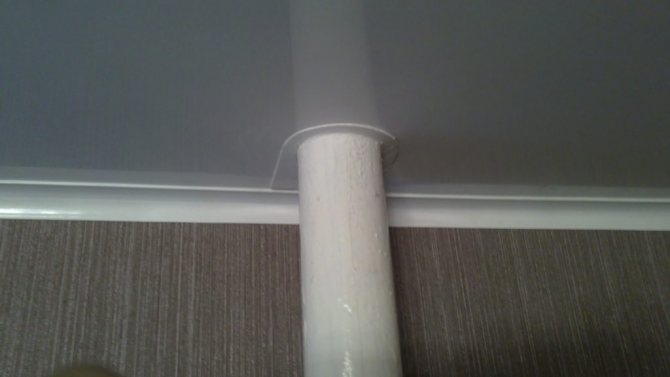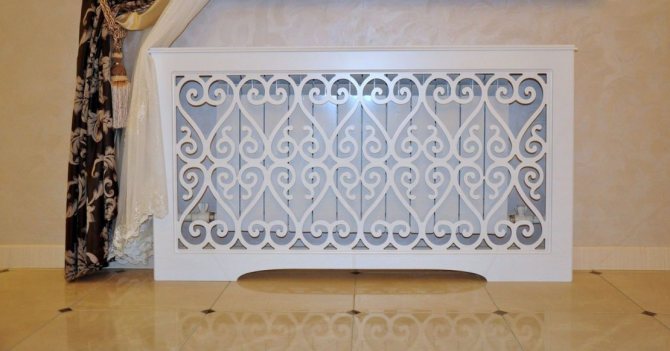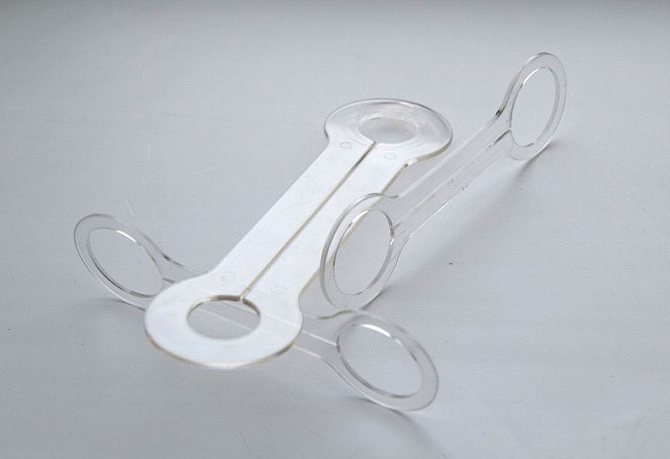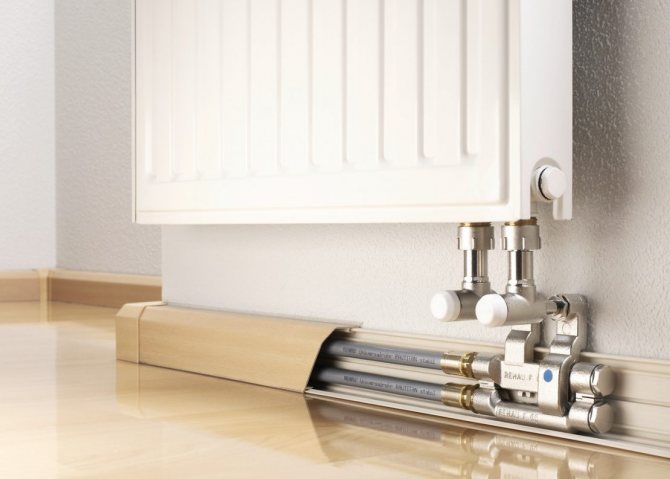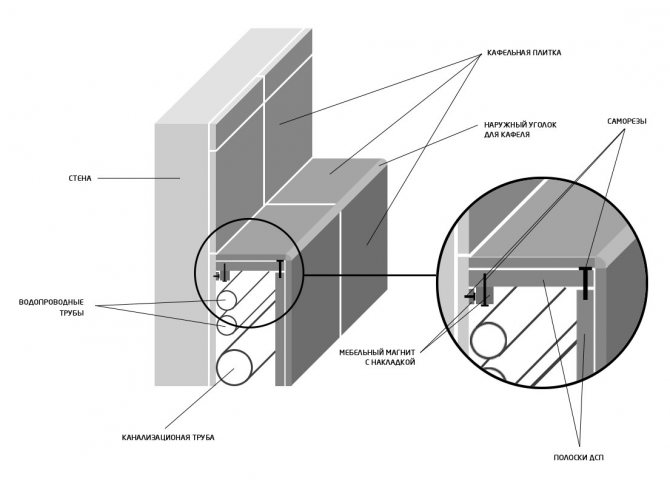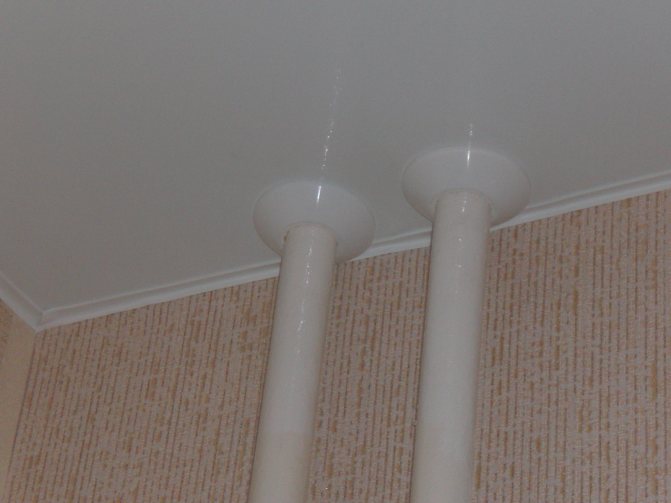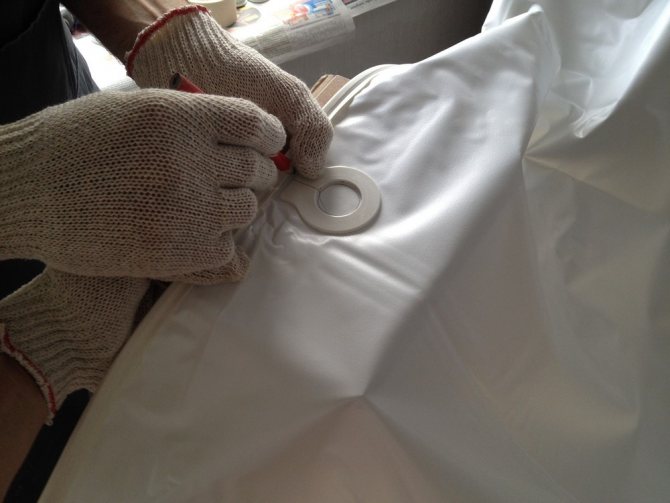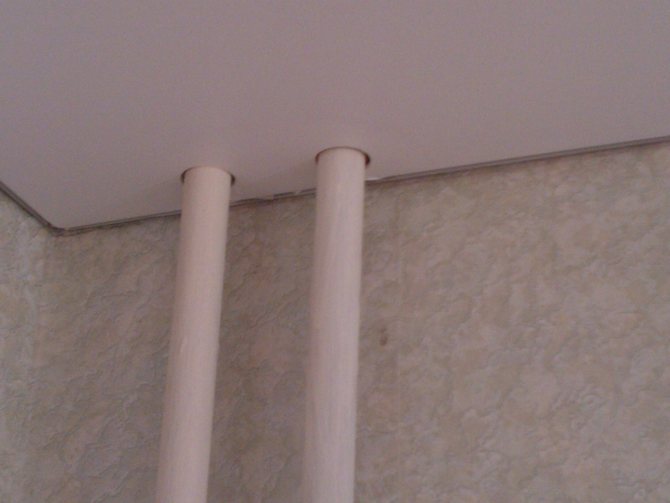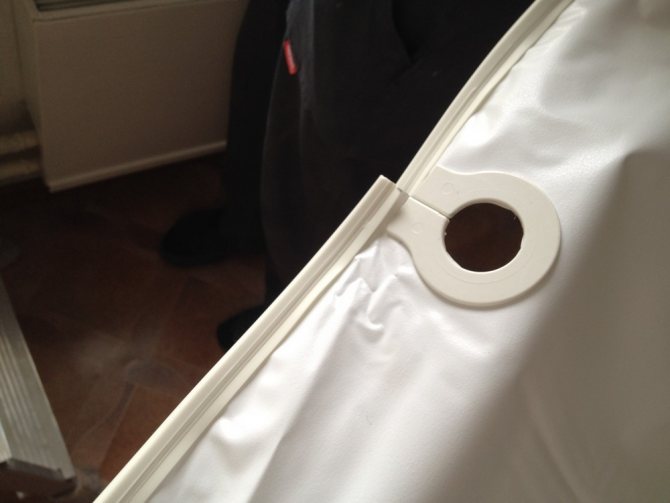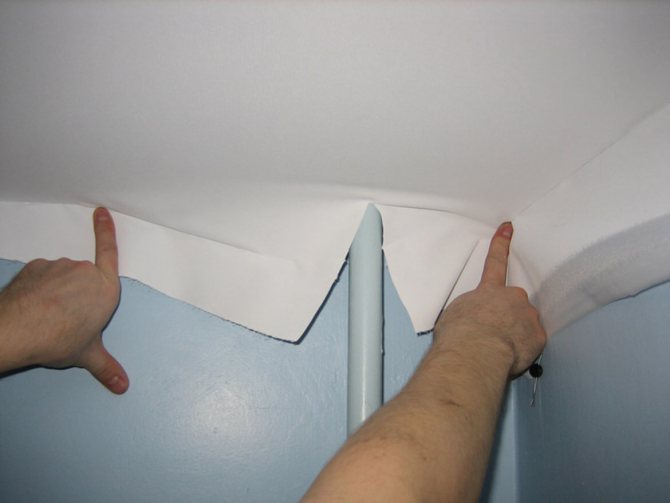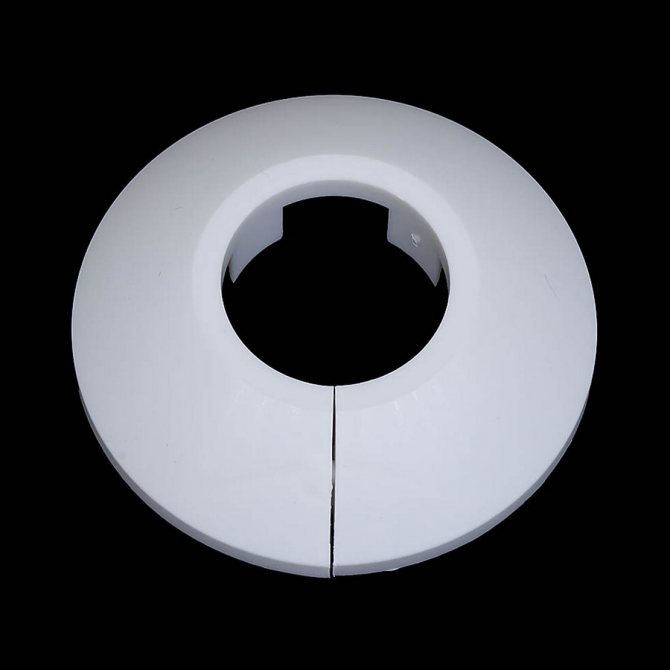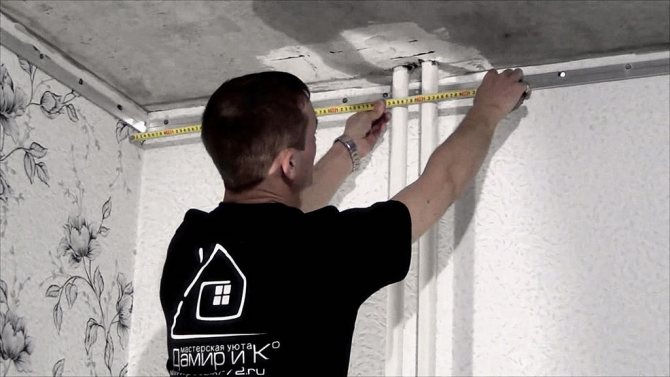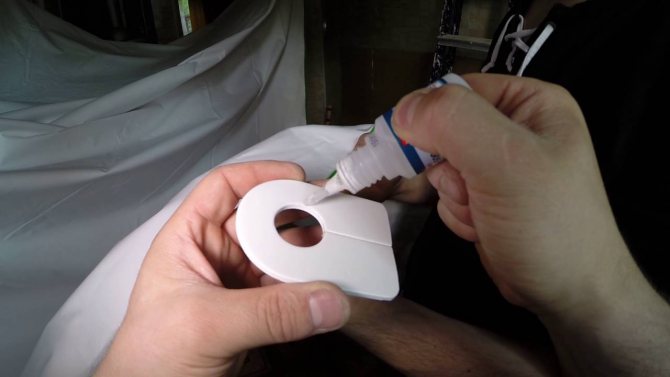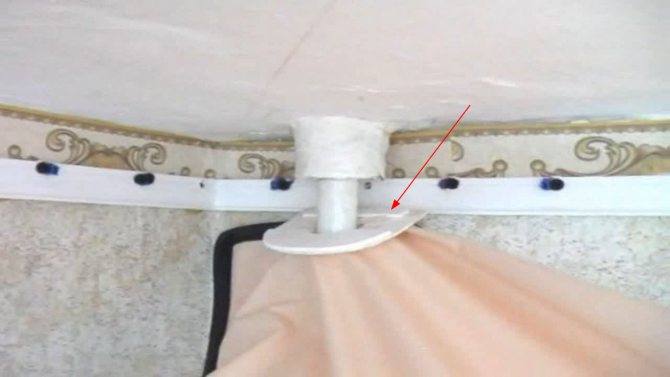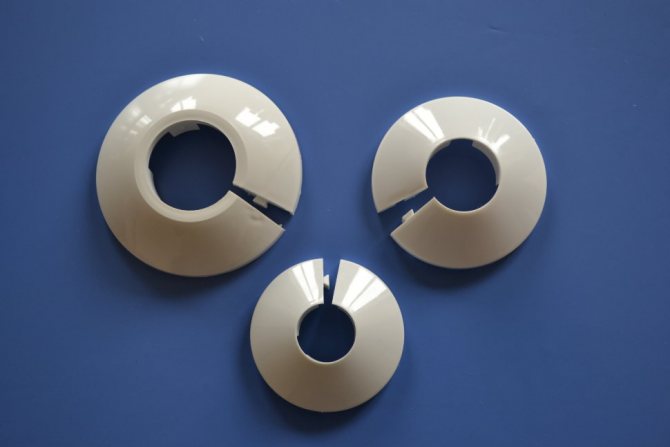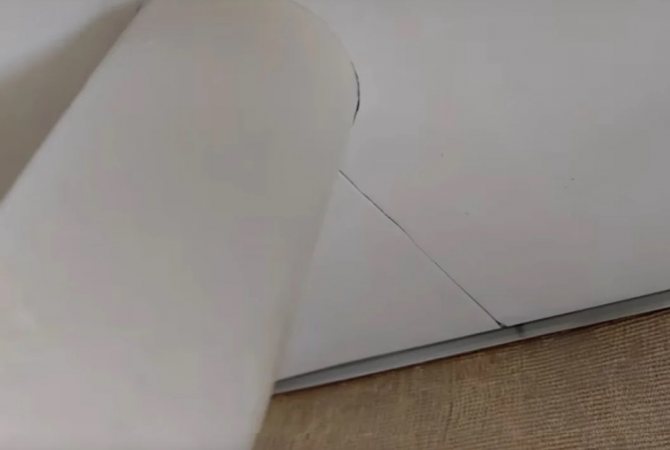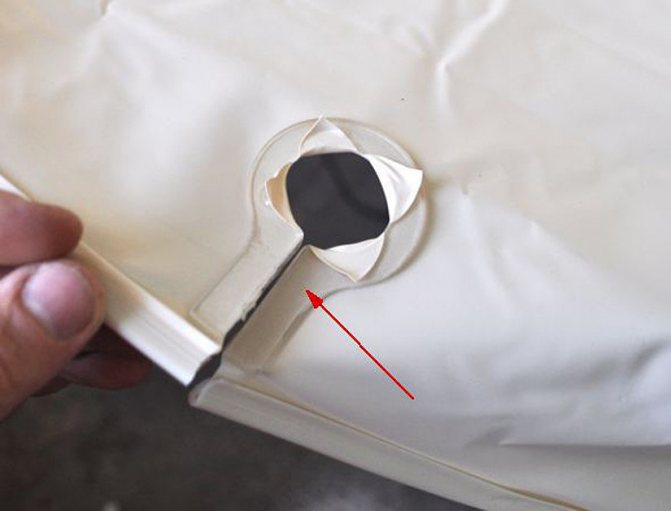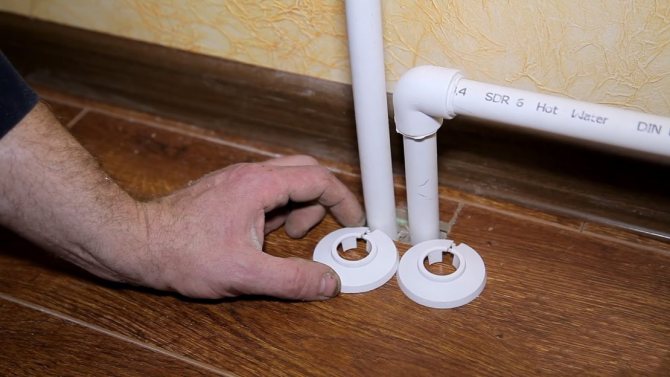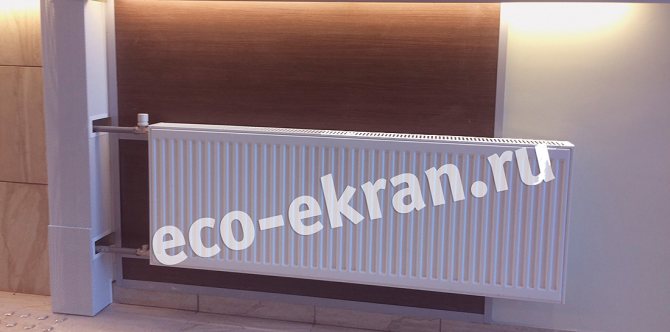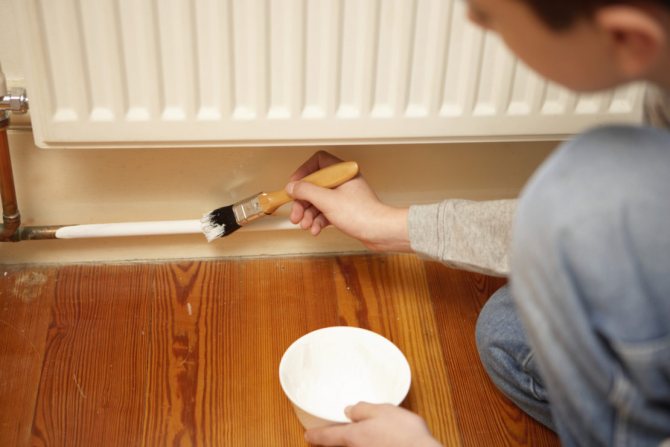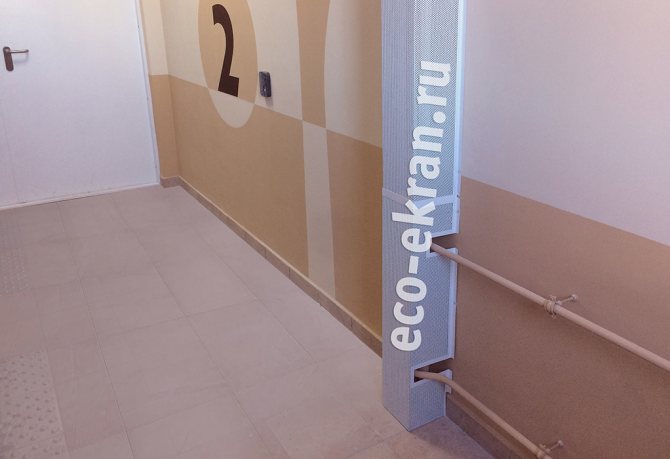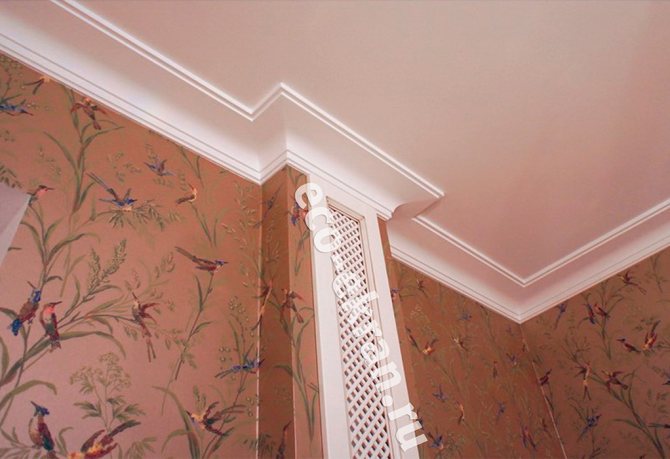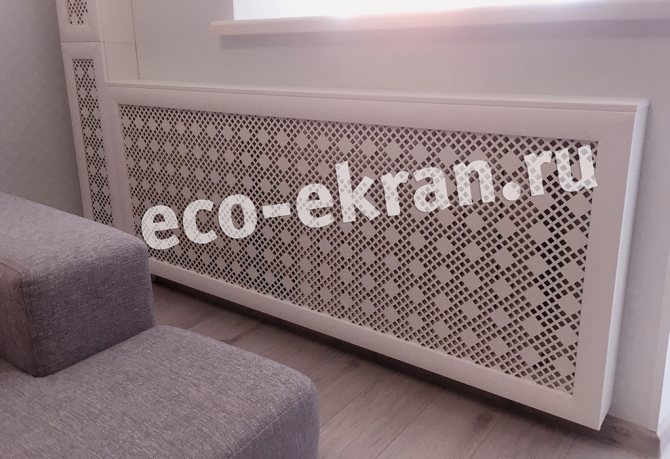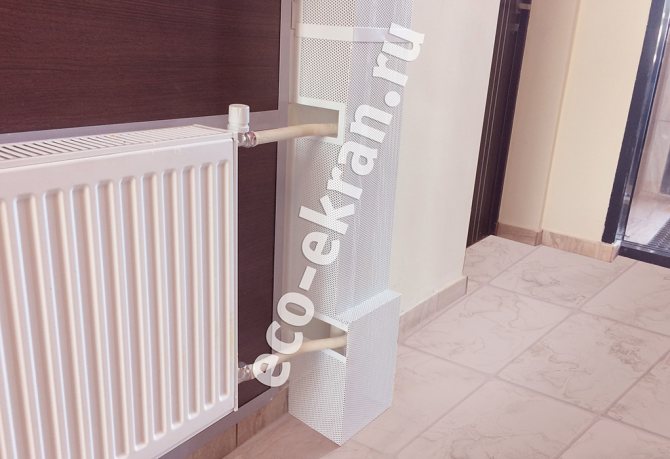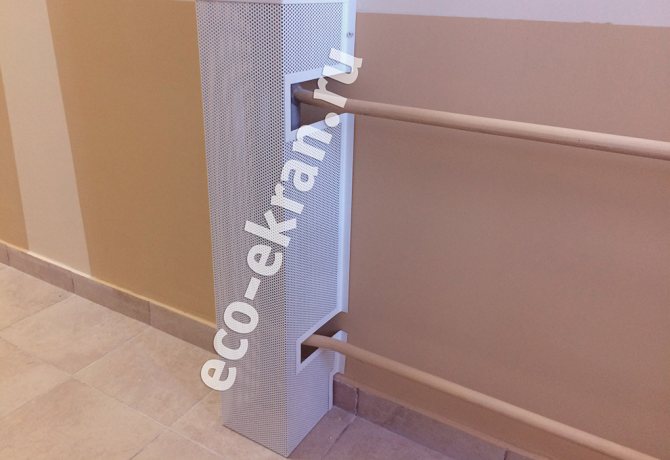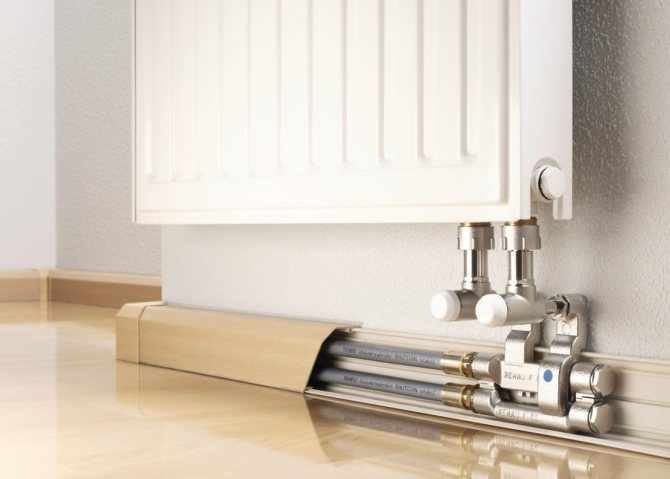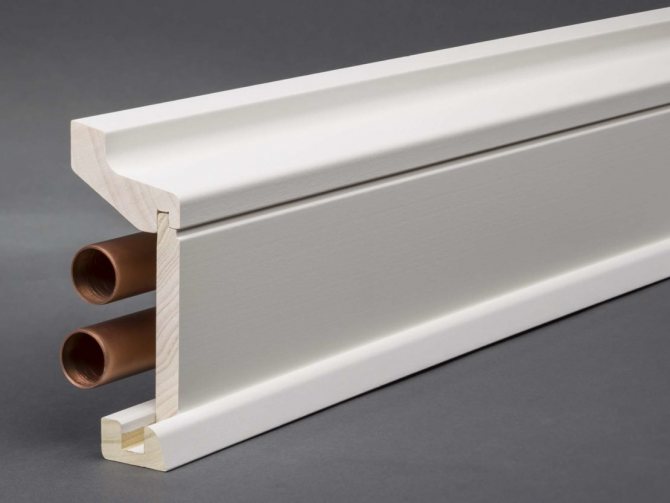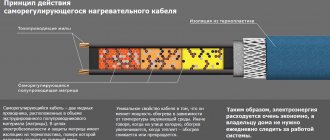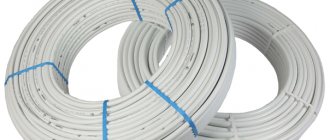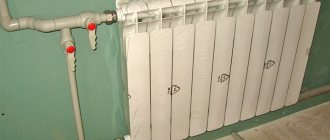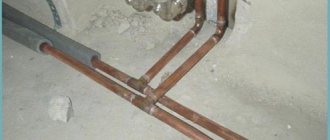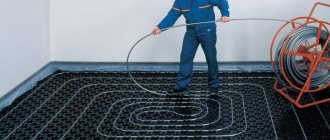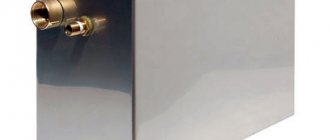Sometimes heating pipes spoil the interior of the room, because they are laid in an open way. To hide the unattractive layout, they use different methods - decorating with a screen, painting, decoupage. Sometimes for this purpose a special plinth or box for heating pipes is installed. Moreover, you can buy ready-made elements to hide the wiring of the heating system or make your own decor. Either way, the result is an attractive interior and a warm environment.
How to close the gap between the laminate and the pipe
If the gap is small, then you can fill it with a sealant. They come in a variety of colors, so you can easily find the one that matches your gender. But the best option to decorate the gap would be special pipe linings.
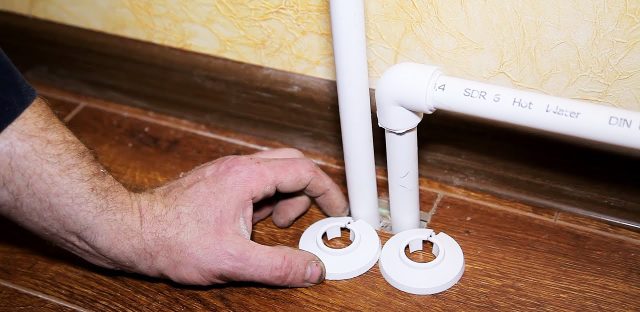
They can be different in shape, for example, round or square. Also, there are bypasses with two holes, for cases where the pipes are located close to each other.
To adjust the temperature
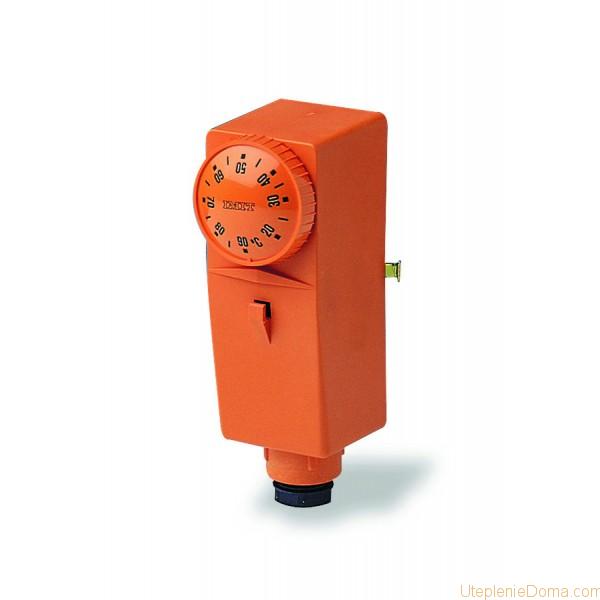

Contact thermostat for heating pipe
Heating thermostats have a regulating function. They change the temperature of the coolant based on the sensor readings. A temperature sensor installed on the heating pipe acts as a thermometer. The location of the sensor depends on the environment it is reading:
- The heat carrier itself - the thermometer is installed on the heating pipe;
- Indoor air - the sensor is most often installed in the floor;
- Outdoor air - the thermometer is outside the room.
Thermoregulators are thermostatic (manual) and electronic, which are controlled by means of a special unit. The latter are equipped with a display. The thermostat attached to the heating pipe can control the amount of the supplied heat carrier, partially blocking the nominal passage of the circuit. The less coolant enters the system, the lower the temperature. Thermostats are installed not only on pipes, but also on radiators. When the temperature of the batteries reaches the set level, they reduce the amount of the supplied heat carrier.
To prevent this from disrupting the circulation of the coolant and increasing the pressure in the system, a bypass is installed - this is a jumper on the heating pipes. It can usually be seen in front of the battery. The bypass serves to bypass the shut-off valves. For example, if the radiator needs to be repaired, it should be turned off, and the circulation will pass through the bypass bypassing the battery.
What are these linings called
When looking for suitable overlays, you may encounter the following difficulty: on different sites and in catalogs, these decor elements are called differently. The most common names are:
- pipe lines;
- decorative overlays;
- rings for pipes.
Do not be alarmed - all this is the name of the same subject, and its essence does not change from the wording. Therefore, if you cannot find the part you need in the catalog, it is worth trying a search by other words.
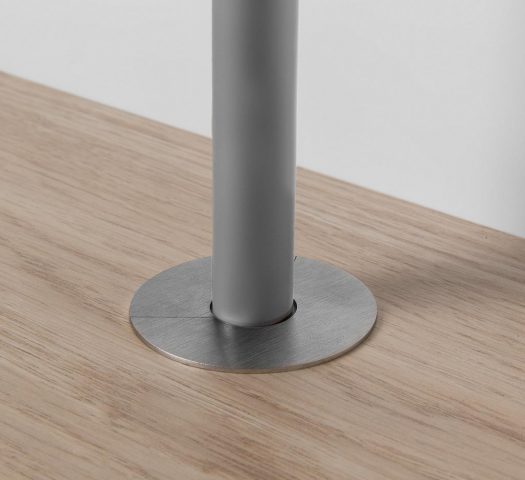

When you can do without stretching the pipe with a stretch ceiling
The use of a plasterboard box significantly complicates the design of the ceiling finish, but, on the other hand, the absence of cuts and bypass elements is a guarantee of the durability of the canvas or film on the ceiling.
It is not necessary to build a box of 10-20 cm in size, usually the heating pipes passing through the ceilings in the apartment are 5-6 cm away from the walls.In order not to use the bypass unit, it is enough to lay the bearing profile on a wooden beam or bearing U-profile sewn around the perimeter of the walls of the room.
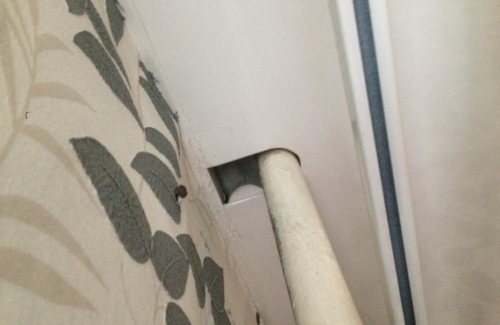

Passage through the ceiling curb
In this case, the pipe will be behind the baguette, it will only be necessary to hem the lower part of the timber with drywall strips or close it with polyurethane ceiling curbs.
Important! Sometimes it is necessary to install an exhaust duct or a pipe from a gas column. In this case, it is not necessary to cut the film or fabric from the point of passage to the edge. It is enough to glue a heat shrinkable ring in diameter slightly larger than the outer dimension of the casing and install the pipe in the hole. Moreover, this can be done after installing stretch ceilings.
What materials are they made of, how much do they cost
Pipe lines come in three materials:
- plastic;
- wood;
- metal.
Most often they are selected depending on the floor covering. Wooden rings are better suited to parquet, plastic rings to linoleum.
But there are no strict rules in this matter, choose for yourself what you like best. In addition, plastic elements are produced with a wood-like texture, and from the height of a human being, you can hardly see the difference between wood and imitation.
Metal bypass for pipes Wooden bypass for pipes Plastic bypass for pipes
Plastic pads cost about 50 rubles for a pack of 2 pieces. Wooden rings will cost more - about 120 rubles.
How you can carefully glue a hole in a laminate, see the article How to glue a hole in linoleum - the best ways.
Installation
Installation of such a device is simple and does not require special skills and tools. However, the installation of different types of rings has its own nuances:
- wooden ones are in two parts and simply snap around the pipe. Connecting joints are usually not visible;
- on plastic and metal there is a special gap with which you can expand and put on the pad. The connector is directed towards the wall so that it is not visible.
No additional commit is needed. This is very convenient, because if necessary, you can easily remove the outline, and then return it to its original place.
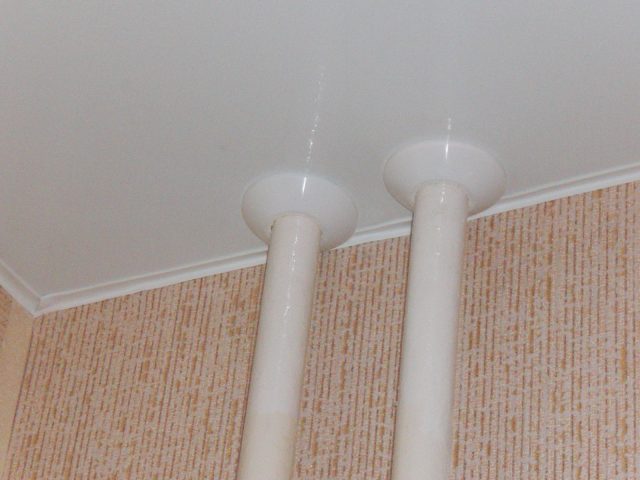

Corrugated pipe application
The main purpose of this material is to provide insulation. Unlike rigid metal thick-walled pipes, for which expensive auxiliary equipment must be used, corrugation for heating pipes does not require such tools and materials. At the same time, its functionality remains at a high level.
Its characteristic properties are:
- low weight per running meter;
- maximum flexibility due to texture and thin walls;
- sufficient strength, since the material is metal.
It is easy to work with the material even without assistance. It does not need welding equipment, which greatly simplifies the installation process. It takes a little time and effort during the isolation procedure.
Manufacturers offer several types of pipes, the most popular of which are:
- Polymeric. They are based on polyethylene or polyvinyl chloride. These products are in demand for laying communication and electrical cables. They reliably protect from external negative mechanical influences and moisture penetration.
- Steel. They are in demand for works related to heating. Thanks to them, a reliable shelter is formed, which is difficult to overestimate. They are used in air conditioning, ventilation, and in the installation of fireplaces and stoves. The disadvantage for them is their weak resistance to mechanical stress.
If there are no large power loads, then steel pipes will effectively cope with the task.
The use of skirting boards
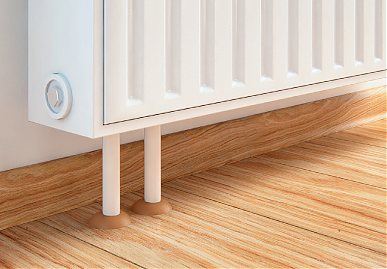

Plinth for heating pipes is widely used. It provides the following results:
- the safety of operation is increased, since the distribution lines of the coolant are hidden;
- there is a reliable fixation of pipes;
- provides an aesthetic appearance in the interior.
Those who want to buy a plinth for heating pipes should know that it is possible to use main pipes with a diameter of not more than 22 mm.
Skirting board
What to do if the pipe is too close to the wall
This situation complicates the installation of a decorative rosette. But nothing is impossible. There are several options for solving the problem:
- try to find the right size for the part. Perhaps the smallest pad will fit into this gap;
- saw through the ring and make the connector wider, thus placing it flush against the wall.
- if you are using wooden elements, you can only take one half of the outline.
In the latter two cases, for additional fixation, you will have to use a sealant or liquid nails.
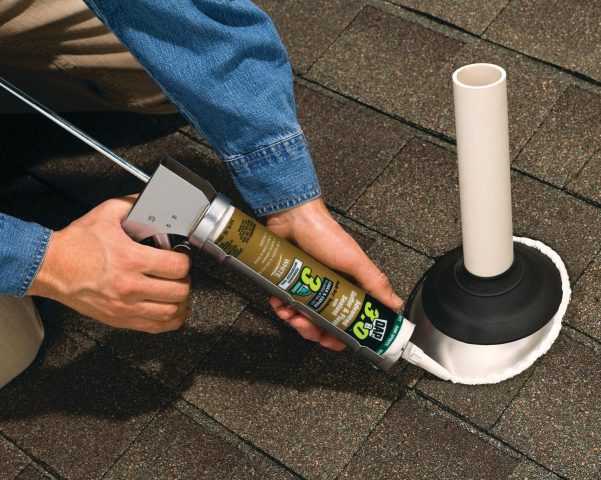

The use of such devices is gaining great popularity. After all, it is beautiful, simple and not expensive. And most importantly, you do not need to rack your brains and come up with various homemade products - everything you need is already in any hardware store.
Skirting heating what is it
There is a fairly large number of interesting and fairly economical systems on the market that an ordinary city dweller is not able to use. This is most often due to the inability to provide sufficient thermal insulation for the apartment. Another thing is your own house, where you can achieve really high performance. This, in turn, allows the use of non-traditional heating options.
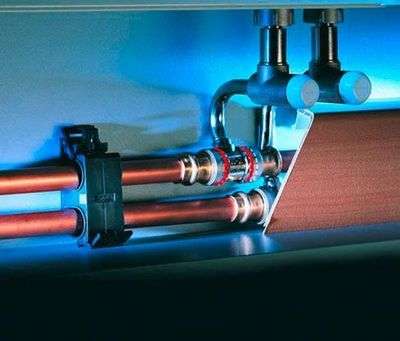

Plinth heating refers to just such systems. It got its name thanks to the installation method: the radiators used for heating are very small in size - 3 * 14 cm, and are installed along the wall of the room. In appearance, they practically do not differ from the usual floor plinth.
The principle of operation is as follows: cold air at floor level is taken into the radiator through the lower hole, heats up on the surface of the heat exchanger and is fed into the room through the upper hole. The peculiarity is that the heated air does not move immediately throughout the entire volume of the room, but spreads along the wall, first of all, heating its surface. Accordingly, the room is heated not so much by the flow of warm air as by the surface of the heated wall. Such a system, judging by the reviews of mainly European consumers, has many advantages. The photo shows an example of such heating in a private house.
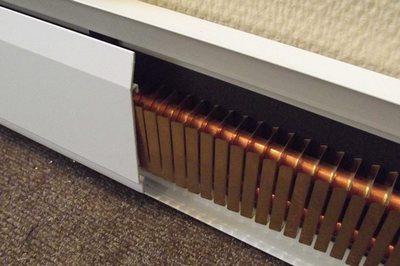

Pipe bypass without notch
If desired, it is possible to bypass the pipe on stretch ceilings without using cuts. On the building materials market, you can now find a lot of interesting solutions that allow you to create almost any ceiling. A variety of options allows you to choose the optimal design, which will take into account the pipes passing under the stretch ceilings.
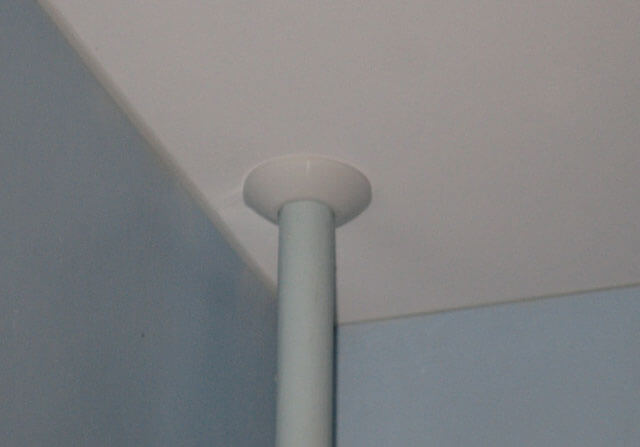

A good design option is multi-level stretch ceiling systems. Any pipeline can be hidden under such a ceiling, regardless of its purpose. With a strong desire, even a large ventilation box can be hidden under the stepped ceiling, which pretty much spoils all the visual characteristics of the room.
In any case, before going around the pipe with a stretch ceiling, it is worth considering all possible design options - perhaps just such a scheme will be selected that will simplify the work and create the most attractive interior.
Pipe bypass algorithm
Bypassing the pipe with a stretch ceiling can be performed in two ways, allowing you to take into account the nuances of the situation, such as the angles of declination of the pipe, distance from the wall and the materials used to equip the ceiling.
Of course, for different methods of circumvention, their own algorithms are required, but they are preceded by exactly the same preparation, during which it is necessary to create a ring that does not allow the canvas to creep and gives it good visual qualities:
- First of all, a rectangle is cut out of a thin sheet of plastic;
- The rectangle should be at least 5 mm wider than the pipe diameter, and the length should be the same distance greater than the gap between the baguette and the outer edge of the pipe;
- Next, you need to measure the diameter of the pipe and mark a circle on the plastic rectangle that is about 0.5 cm wider than the diameter of the pipe;
- The outer edges of the ring are outlined in a semicircle;
- Directly in the middle of the ring, a straight line is drawn between the area directed towards the baguette and the hole;
- The finished template is cut out, and on this the ring is ready.
Now you can proceed directly to the installation of the ring and the bypass of the pipe.

